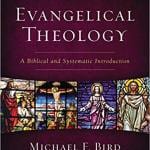Who is the Beloved Disciple of the Fourth Gospel? John the apostle, John the elder, Thomas Didymus, Lazarus, an “ideal” disciple, a literary fiction, who?
According to Harold Attridge:
The unidentified Disciple is a challenging riddle that invites readers to return to the Gospel in an attempt to solve the riddle. Whatever they do with the riddle, they will probably stumble across that other major witness, the only true and reliable witness to the Father, and, if they do so, the evangelist would no doubt be satisfied. But if our evangelist is thinking like a dramatist, like for instance the dramatist sketched in Aristotle’s Poetics, he may wonder a bit about how the audience will relate to the major characters in the story. The audience will hardly react with pity or fear for the fate of Jesus. Jesus is not a tragic hero like the doubly blind Oedipus, nor arrogant and obtuse like Pentheus, the characters from classical drama that Aristotle had in mind. Jesus is to be emulated, to be sure, but his is a kind of cosmic story that we, the audience of the Gospel, relate to in wonderment and awe. It is a story that readers are invited into, but not by putting themselves in the place of the protagonist. … The Fourth Gospel makes a similar move, providing a character with whom the audience can ‘identify,’ whose story they can read as their own. This character gets them into a relationship with Jesus and thus encourages them to experience the kind of dramatic, transformative encounter exemplified by other characters in the story. This character is, of course, the Beloved Disciple.
Harold W. Attridge, History, Theology, and Narrative Rhetoric in the Fourth Gospel (The Pere Marquette Lectures in Theology 2019; Milwaukee, WI: Marquette University Press, 2019), 64-65.












